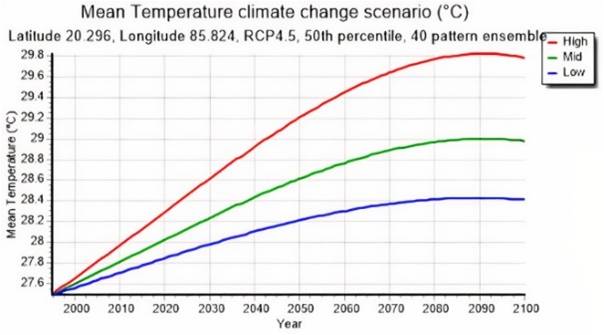
Temperature dynamics is a widely recognized indicator of the global warming phenomenon. Changes in temperature patterns in Bhubaneswar, India, were assessed by examining the monthly minimum and maximum temperature data for 60 years (1956–2015) sourced from the Indian Meteorological Department. SimCLIM climate change risk assessment software was used for projecting the temperature regime for four different representative concentration pathways. Further, a survey of 112 farmers was conducted to understand their perceptions of temperature variations in and around Bhubaneswar city using a multi-stage sampling technique. Mann–Kendall statistics and linear regression were used to analyze the monthly temperature data and trend detection. The study reveals a change of +4%,-4.44%, and +1.09% in the mean monthly maximum, minimum, and annual temperature. The results of the future projection show a temperature change of 0.81°C for RCP 2.6, 1.12°C for RCP 4.5, 1.03°C for RCP 6.0, and 1.54°C for RCP 8.5 for the year 2050. Confirming the analysis findings, most of the interviewed farmers also perceived increasing temperatures and decreasing precipitation in and around the city. The study outcome of temperature trend analysis and future projections will be helpful for farmers and policymakers in formulating adaptation strategies to climate change.
Total file downloads: 14